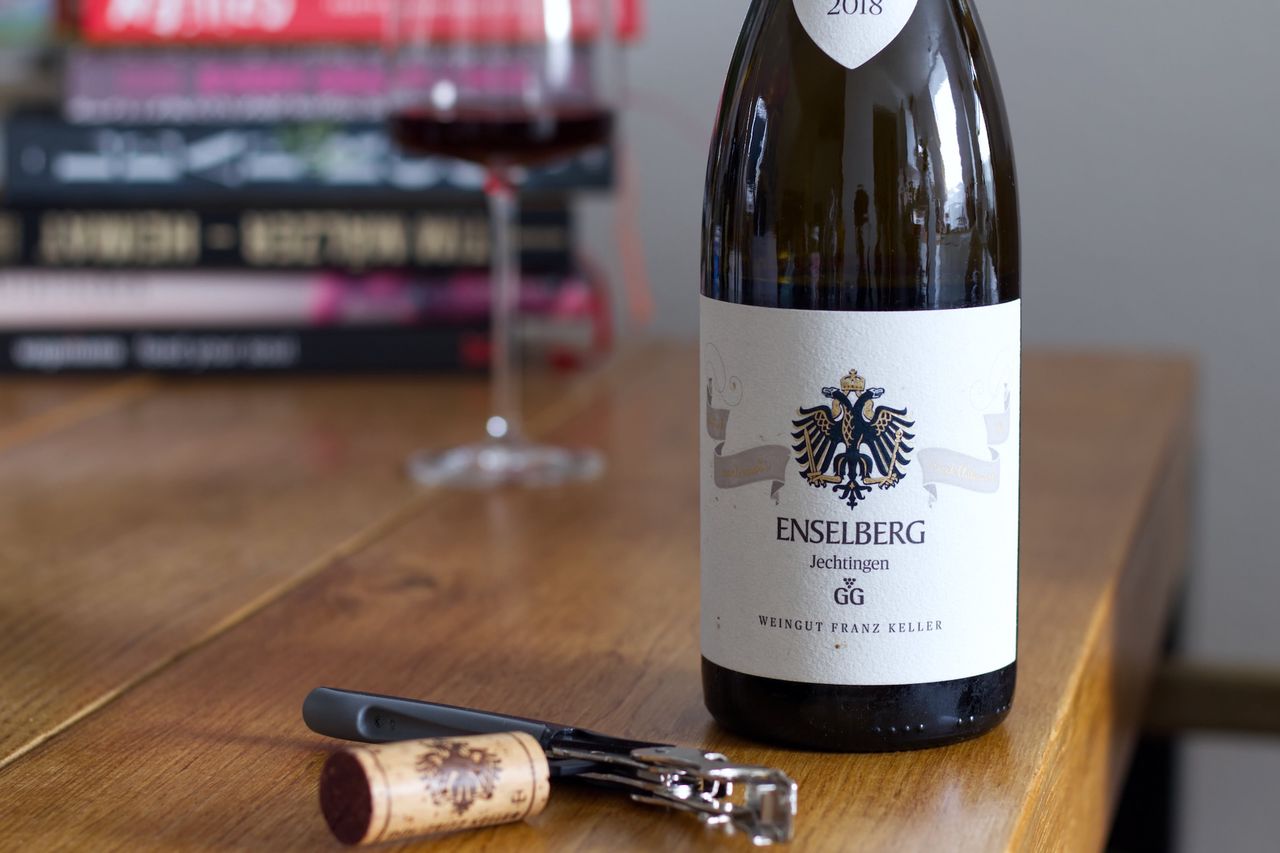Franz Keller - Enselberg 2018
Continuing with Spätburgunder from Baden with this bottle of Enselberg 2018 GG from Weingut Franz Keller.

Let’s just act like it was planned from the beginning that the last two bottles of Pinot from Baden would create a thematic connection to the first two bottles. It definitely wasn’t a coincidence that I only noticed now. No way. As I mentioned, I originally just wanted to open a few wines from 2018, and that’s how we ended up with this bottle of Enselberg from that year. The fact that Friedrich Keller, who now oversees the wines at Weingut Franz Keller, is also significantly involved in the wines from Klotz, is a nice bonus. The grapes for this wine grow on volcanic soils in the Jechtinger Enselberg at the Kaiserstuhl. The label still prominently features “GG” in the middle, but those who want to buy the current vintage will now find “1G” instead. What was for years the entry point into the world of “Großes Gewächs” (GG) at Weingut Franz Keller is now marketed as “Erste Lage” to make the top tier stand out more clearly. This is fitting for a week when the German wine world gathered in Wiesbaden to taste the new GGs. In recent years, there’s been a lot of talk about too many wines not fully living up to their classification and too many GGs at some wineries. The fact is, I don’t make wine, nor does my bank balance depend on how well I can explain to others why Weingut X has 14 GGs on the list, Weingut Y only 2, and why there might still be a wine above that without any GG on the label, but from that one really great parcel, and what all of this has to do with a pyramid. That’s why I think my opinion on the subject is pretty irrelevant. In short, I believe that pyramids get narrower at the top, and the same should be true for quality pyramids. If, in reverse, and especially with German Pinot, that means I can’t or don’t want to afford the top tier anymore, then so be it. There are a thousand other things I can’t or won’t afford as well. And personally, I really don’t care whether GG, 1G, or Landwein is printed on the label. In this bottle, by the way, just under a third of the grapes were fermented as whole clusters, and the wine was aged in barriques with 40% new barrels.
At first, the wine smells rather rough. This can be good or bad, here, it’s quite good. It also has a bit of a stench, somewhere between barnyard and wet earth, and while that’s not always a compliment, here it is. There’s fruit, there’s undergrowth, and then come the spices—the kind of spices you throw into a stew, like allspice, juniper berries, and bay leaf. But without the warmth that a stew brings. The wine is cool, refined, and somehow demanding, captivating, and not something to drink casually. But it’s also great, from the first sip. Juicy with lots of cherry and a little bit of tannin on the finish. It’s always impressive how such delicate, cool wines can come from a year like 2018. And this bottle not only comes from 2018 but is also blessed with the sunshine hours of the Kaiserstuhl, one of the hottest regions of this country.
Not much changes overnight. The cherry becomes a bit juicier, the grip grippier, and overall, the wine just grips more. More edge, more acidity, more bite. The nose remains quite similar to what I described on the first day. But it’s good that not much changes because on this second evening, we only manage to share a small tasting glass.
The remaining content had to wait another night patiently. The charming stench between barnyard and forest floor didn’t suffer. I’m quite impressed with how that aroma stoically comes out of the glass with similar intensity over all three evenings. Normally, this note is the first to fade. Not so in this case. Only very late, in the last sips, does it recede, and I have to say, without it, the wine would really be missing something. The tannins have become a touch softer, almost velvety now, and the fruit is even fruitier. We’re almost at the point of a comfort wine, but only almost. Every single glass from this bottle was fantastic from the first to the last sip. The last two weeks, we’ve already had fantastic wines in the glass, and this is no exception. It costs about the same as the Vulkan from Wasenhaus last week and comes from the same subregion too. The Wasenhaus might be a bit rougher, the Keller a bit more barnyard, but both wines are really, really good. I’d also comfortably give both another 5 years in the cellar. Considering the overall price development for German Spätburgunder, I’m almost tempted to say that this is practically a bargain. But at around 40 euros, that seems a bit silly. Both bottles are definitely good enough that the itch to reach for a higher shelf disappears—almost, at least. And no matter whether this is the entry point into the GGs at Franz Keller, or now a step below, the wine is really good. And that’s all it needs to be.